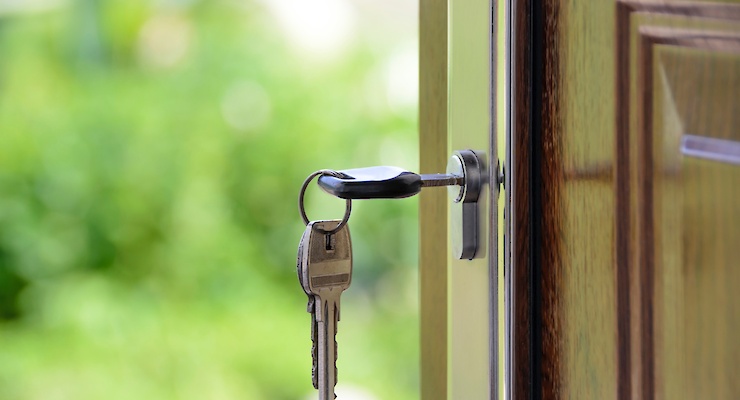


Head of Content

Mortgage Advisor & Director
Low Deposit Buy to Let Mortgages

Are you considering investing in the property market but feeling held back by the substantial deposits required for traditional buy-to-let mortgages?
Low-deposit buy-to-let mortgage options may be the solution you’ve been seeking. They enable investors to enter the property market with a smaller initial investment while still benefiting from rental income and potential capital appreciation.
This comprehensive guide will provide you with an in-depth understanding of low-deposit buy-to-let mortgage options, their advantages and disadvantages, and tips for securing and managing your investment.
The UK buy-to-let market is a topic of interest and debate for many investors and landlords. Despite the challenges and potential risks, some experts suggest that buy-to-let can still be a viable investment strategy if approached with a long-term view. However, it's important to note that this is not a get-rich-quick scheme, but rather a source of steady income.
What is the lowest deposit for a buy-to-let mortgage?
The lowest deposit accepted for a buy-to-let mortgage is typically 15%, although most mortgages require at least 25% of the property’s value as a deposit, with some as high as 40%.
Unfortunately, you won’t be able to secure a buy-to-let mortgage with a 5% deposit, however, you may be able to leverage equity in your existing portfolio of properties to minimise the deposit amount required. Residential mortgages often allow deposits of 5%, but this doesn’t apply in the case of buy-to-let mortgages.
Is buy-to-let still a worthwhile investment?
There are signs that the buy-to-let market has improved since suffering a downturn as a result of the UK Government's Mini-Budget in 2022. The latest data from Moneyfacts.co.uk, released in April 2024 indicates that product choice within this sector has increased of late.
Meanwhile, average rates of two and five-year fixed rate buy-to-let mortgages have remained below 6% since the start of the year, meaning there are competative deals out there, even to borrowers with low deposits.
While there are positive signs that the market is stabilising, recent data from Paragon Bank suggests that where landlords are investing is still shifting, with many snubbing southern cities such as London in favour of investing up north, in places like Manchester and Birmingham.

Choose your own low deposit buy-to-let mortgage or speak to a broker about your options
Understanding Buy-to-Let Mortgages
Buy-to-let mortgages share similarities with residential mortgages but have several key differences.
These mortgages typically require a minimum deposit of 25%, although some lenders may offer products with lower deposit requirements of just 15%. Most lenders require the rental income to be 25% to 30% higher than the mortgage payment, with the maximum borrowing amount contingent on the expected rental income. So, how much deposit is needed for buy-to-let mortgages? It varies depending on the lender and the specific product, including interest-only options.
However, venturing into low-deposit buy-to-let mortgages isn’t without risks. For example, the property’s sale price could be lower than anticipated, leaving a balance to be paid off on the mortgage.
Understanding the pros and cons is crucial in making an informed decision about whether this investment path is suitable for you.
Advantages of Low Deposit Buy-to-Let Mortgages
One of the primary benefits is the accessibility they provide to the property investment market. With a smaller initial deposit, investors can enter the market with lower upfront costs, making it easier to begin investing in rental properties. Furthermore, low deposit buy-to-let mortgages enable investors to access more expensive properties than they would with a traditional mortgage, potentially leading to higher returns on investment.
Despite typically having higher mortgage rates due to the perceived risk for lenders, the potential for higher returns can offset these higher mortgage rates for some investors. By consulting a mortgage advisor with expertise in low-deposit mortgages, they can recommend the best available mortgage options tailored to your specific needs and financial situation.
Disadvantages of Low Deposit Buy-to-Let Mortgages
While low-deposit buy-to-let mortgages offer several advantages, it’s essential to consider the potential drawbacks. These mortgages often attract higher interest rates due to the limited number of lenders available and perceived risk.
Another significant concern is the heightened risk of negative equity. With a smaller deposit, there’s a greater likelihood of the property value declining below the amount of the loan, resulting in negative equity. It’s crucial to weigh the advantages and disadvantages and determine whether the potential rewards outweigh the risks.
How to Secure a Low Deposit Buy-to-Let Mortgage
If you’ve decided that a low-deposit buy-to-let mortgage is the right choice for your investment, the next step is to find a suitable lender and prepare a strong application that demonstrates your ability to repay the mortgage and manage the property effectively.
Consulting an experienced mortgage adviser can help you identify lenders with the lowest deposit requirements and guide you through the application process. By providing accurate financial information and evidence of landlord experience (if applicable), you can maximise your chances of approval.
Finding the Right Lender
When searching for a suitable lender, it's helpful to consider factors such as interest rates, fees, and eligibility criteria when analysing lenders. Your mortgage advisor will be able to recommend the best lender to suit your specific needs.
Preparing Your Application
To increase the likelihood of securing a low deposit buy-to-let mortgage, preparing a well-rounded application is beneficial.
Providing evidence of landlord experience may be necessary to secure the best deal. Ensuring your application is well-prepared and accurately reflects your financial situation and rental property management capabilities will help to improve your chances of approval.
Leveraging Other Properties

Another option for securing a low deposit buy-to-let mortgage is leveraging equity from other owned properties.
Using Equity from Existing Properties
Using equity from existing properties can help secure a low deposit buy-to-let mortgage, as it provides investors with access to capital that can be used as a deposit for the new property. This decreases the amount of cash needed initially, making it advantageous for investors who may not have the funds available to make a significant deposit.
Risks and Considerations
It’s important to recognise that leveraging equity from existing properties may come with increased risk, such as the possibility of negative equity if the property value decreases.
Before deciding to leverage other property for a low deposit buy-to-let mortgage, carefully assess the potential risks and determine if this option aligns with your investment goals and risk tolerance.
Tax Implications
Investing in buy-to-let properties comes with various tax implications that investors should be aware of.
These include income tax on rental income, capital gains tax on property sales, and increased stamp duty land tax on buy-to-let properties. Understanding the various tax implications is essential for accurately estimating your investment’s potential return and ensuring compliance with tax regulations.
Income Tax on Rental Income
Rental income from buy-to-let properties is subject to income tax, with rates varying based on your income tax band and location. In England, Wales, and Northern Ireland, rental income is taxed at 20%, 40%, or 45%. In Scotland, the rates may vary depending upon the circumstance. They could be 19%, 20%, 21%, 42%, or 47%.
As a landlord, you can claim certain expenses against your rental income to save on taxes. These expenses include letting agent fees and property maintenance. It’s important to accurately track your rental income and allowable expenses to ensure you pay the correct amount of tax.
Capital Gains Tax on Property Sales
Capital gains tax is charged on buy-to-let property sales, with rates ranging from 18-28%.
When selling a buy-to-let property, you can offset certain costs against any capital gain. These include Duty, solicitor and estate agent fees. Losses made on the sale of properties in previous tax years can also be offset. It’s essential to keep accurate records of these expenses to minimise your capital gains tax liability.
The deadline for paying capital gains tax on buy-to-let property sales is 30 days after the sale. Ensure you have a plan in place to pay this tax in a timely manner to avoid any penalties or interest charges.
Stamp Duty Land Tax on Buy-to-Let Properties
Stamp duty is a tax charged on property purchases in the UK. Buy-to-let properties are not exempt from stamp duty and landlords who buy properties to let out to tenants are still required to pay this tax.
If you're a UK resident buying a main residence, the highest rate you'll pay is 12%. However, you'll pay a surcharge for additional properties and a extra if you're a non-UK resident.
See our complete guide to stamp duty for the latest rates and exemption information.
Managing Your Buy-to-Let Property
Managing a buy-to-let investment can be a challenging yet rewarding endeavour.
Effective management involves tenant management, property maintenance and repairs, and understanding your legal responsibilities as a landlord. By staying on top of these responsibilities, you can help to preserve your property’s value, attract quality tenants, and maintain a steady stream of rental income.
In this section, we will discuss the various aspects of managing a buy-to-let property, providing you with the knowledge and tools necessary to maximise your investment’s potential return and create a successful property portfolio.
Tenant Management
An essential aspect of managing a buy-to-let property is effective tenant management.
- This includes thorough tenant screening to ensure they meet your criteria for a successful tenancy.
- Timely rent collection is crucial for maintaining a steady income, and it’s important to have a system in place for tracking payments and imposing late fees if necessary.
Additionally, addressing tenant concerns promptly and fairly is essential for maintaining a positive landlord-tenant relationship. By effectively managing your tenants, you can minimise vacancies, reduce turnover, and maximise your rental income.
Property Maintenance and Repairs
Regular property maintenance and repairs are essential for preserving the value of your investment and attracting quality tenants.
- This includes promptly responding to tenant requests, scheduling periodic maintenance, and ensuring that repairs are completed in a timely and cost-effective manner.
- In addition to addressing necessary repairs, it’s important to budget for property maintenance and repairs to ensure your property is kept in optimal condition.
- By proactively maintaining your property, you can prevent costly issues from arising in the long run and protect your investment.
Legal Responsibilities of Landlords
As a landlord, you must understand and adhere to your legal responsibilities, which include ensuring property safety, providing necessary documentation, and following eviction procedures when necessary.
- Landlords are required to make necessary repairs and maintenance, conduct safety checks, and adhere to health and safety standards.
- Additionally, landlords must secure the tenant’s deposit and provide a written tenancy agreement.
- When executing eviction procedures, landlords are obligated to adhere to regulations pertaining to rent increases and regulated tenancies.
By understanding and fulfilling your legal responsibilities, you can protect yourself from potential legal issues, avoid unnecessary legal fees, and ensure a successful buy-to-let investment.
Summary
Low deposit buy-to-let mortgages offer investors an opportunity to enter the property market with a smaller initial investment, allowing for easier market entry and the potential for higher returns.
However, it’s essential to carefully consider the advantages and disadvantages, as well as the tax implications and management responsibilities associated with this type of investment. By taking the time to understand the intricacies of buy-to-let mortgages and diligently managing your investment, you can maximise your potential returns and create a successful property portfolio.
FAQs
Mortgage brokers can provide invaluable advice and assistance in navigating the complex world of mortgages. They can help you find the best product for your needs, and provide guidance on the best way to structure your loan. They can also help you understand the different differences.
Choosing an Adviser
Selecting a qualified and experienced mortgage adviser is of great importance. To choose a suitable adviser, evaluate their qualifications, experience, and reputation, and ensure they are regulated by the Financial Conduct Authority (FCA).
Read reviews from previous clients and make sure they provide a clear explanation of the products and services they offer, as well as the fees and charges associated with them.

























































































































































